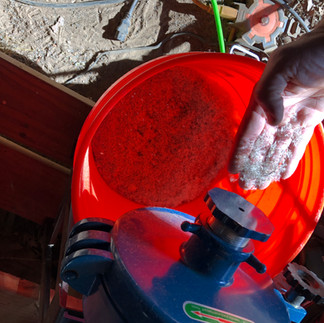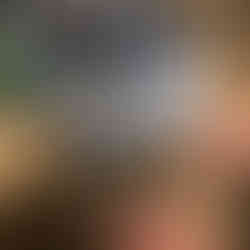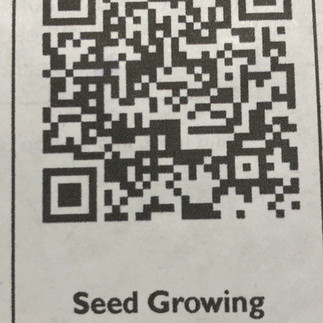Sourcing Local Native Seeds: Bona Terra Seed Sales
- Nuts for Natives
- Jan 10, 2024
- 3 min read
At last, a local source of native seeds for residential gardeners!
Local ecotype seeds for thirty perennials are now available for purchase at Bona Terra with more types of seeds to be added this year. This is a unique source for those of us gardening on a budget, looking for plants not typically available in retail nurseries or looking to explore the incredibly gratifying world of growing natives from seed.
Each seed packet has been lovingly filled through a hand crafted process and includes the straight scoop on what we need to know. On a recent early winter day, Jeremy Tidd, the brainiac behind Bona Terra, shared a bit about his seed production efforts.

Seeds are collected by hand. Some seeds are collected from the Nursery meadow, others from properties where owners allow seed collection. The idea is to get enough diversity to make sure the seeds have enough genetic variety. Jeremy says it is a lot like breeding puppies. You wouldn't want to start a breeding operation with just two dogs. Jeremy says this is particularly critical for establishing long lived and resilient colonies of plants. Jeremy's functional knowledge of plant genetics applied to his work with seeds is comprehensive. The simpler explanation worked for me!

The seed operation is impressive. Seeds and seed heads are collected in 5 gallon buckets and then taken to the nearby barn for processing. Always making do with what is on hand (part of the Bona Terra sustainability ethic), the seeds are processed using some fairly common and not so common items. At one stage, a household box fan placed underneath a bucket of seeds blows chaff off the seeds. At the end of the process, a machine used for producing bullets, pours seeds into packets. Jeremy honed his mechanical skills over the years fixing a fleet of vehicles for his landscaping company and working with metals, wood, stone and ceramic. It all comes together in the seed processing.
The current production scale limits sales to seed packets containing 20 to 300 seeds depending on the species. Commercial scale production is in the works but will take more time. For residential gardeners, there are very few locally grown seeds available and seed orders can be placed on line now.
Seeds come with three ways to get the essential information we need to be successful. The seed packet has the basics. A mailing insert has a bit more information and a QR code on the insert connects you to a complete guide with additional details and the pros and cons of different approaches.
A few planning notes. A fair number of perennial seeds need to be “cold stratified” for a specified number of days. This just means the seeds need to be exposed to winter temperatures. You can plant the seeds in trays or pots and set them out in a sheltered place where they will be exposed to weather, rains and snow. I think it is helpful to find a place where there is some shelter from winds and where you can check on them regularly. I also cover mine with hardware cloth to deter squirrels from digging in the pots. I am a seed starting novice and have had mixed results. I have grown a fair number of coneflowers (Echinacea purpurea), bee balm (Monarda fistulosa) and anise hyssop (Agastache foeniculum) using this method but also have had trays of seeds with no success -- squirrels or my failure to make sure small seedlings don't dry out! Still a lot of fun and easier than you might think. The information provided by Bona Terra includes directions about how to stratify using your refrigerator.
You likely won't see coneflowers or anise hyssop seeds at Bona Terra since those perennials are native to areas west of here. You will find seeds for perennials native locally to Bona Terra Nursery. I ordered blue mistflower, (Conoclinium coelestinum). wingstem (Verbesina alternifolia) and wrinkleleaf goldenrod (Solidago rugosa).
Yet another way to get local native plants!


































Comments